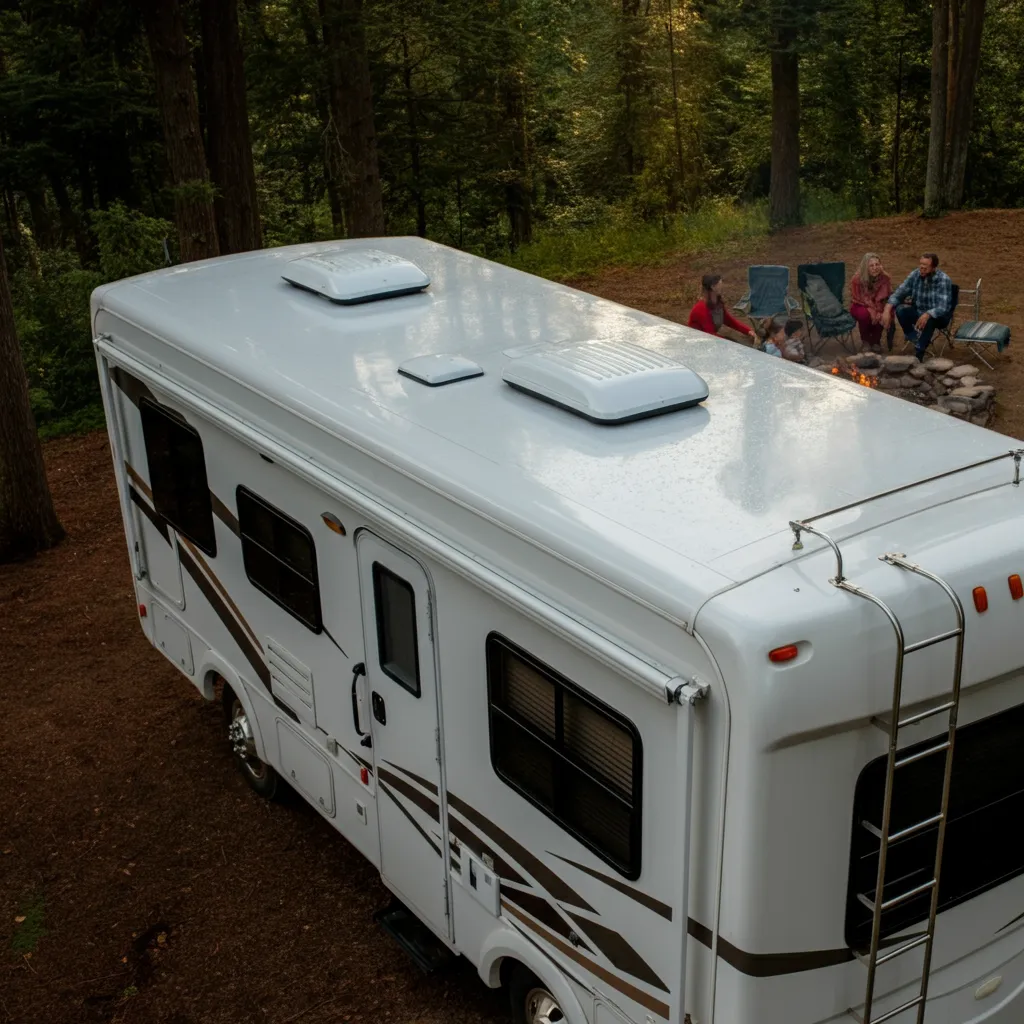
If you’ve heard the term “TPO roof” being tossed around at your local RV park or in your DIY camping group, you’re not alone! For many RV enthusiasts and handy campers, this type of roofing material is both a mystery and a game-changer. But what exactly is a TPO roof, why does everyone rave about it, and how can it benefit your RV adventures?
This blog dives into everything you need to know about TPO (Thermoplastic Polyolefin) roofing. Whether you’re a curious RV owner, someone who loves weekend camping trips, or a DIY enthusiast looking to upgrade your vehicle, this guide is for you. Along the way, we’ll cover the basics of TPO roofs, their benefits, common maintenance tips, and whether this type of roofing suits your RV lifestyle.
What is TPO Roofing?
First things first—what does “TPO” stand for? TPO stands for Thermoplastic Polyolefin, a single-ply roofing membrane made of synthetic materials and reinforcing scrim. Originally used in commercial buildings, TPO roofing has gained popularity in the RV world because of its durability, flexibility, and energy-efficient properties.
TPO is usually a bright white material, designed to reflect sunlight, which helps keep a vehicle cooler during those hot summer days—a major win when you’re out on a camping trip under the blazing sun!
But what makes it unique? Unlike other types of RV roofing like EPDM (Ethylene Propylene Diene Monomer) or fiberglass, TPO is lightweight, resistant to punctures, and extremely easy to clean.
Why Do RVs Use TPO Roofs?
You might wonder why RV manufacturers increasingly choose TPO roofs over other materials. Well, here are some standout features that make TPO the preferred choice for RVs and campers alike:
- Energy Efficiency
The reflective white surface reduces heat buildup inside the RV, cutting down on your AC usage during summer camping trips. This makes your adventures not just more comfortable but also more eco-friendly.
- Durable and Weather-Resistant
Whether it’s pouring rain, scorching sun, or chilly snow, TPO can handle a variety of weather conditions without wear and tear. It’s resistant to UV rays, which prolongs the life of your roof.
- Lightweight
TPO roofing is lighter than other materials like fiberglass or aluminum, which can help reduce the overall weight of your RV and improve fuel efficiency—a huge plus for road trips.
- Affordable
Compared to other roofing materials, TPO offers fantastic bang for your buck. It’s long-lasting and relatively inexpensive, making it a great option for RVers on a budget.
Benefits of TPO Roofs for DIY Enthusiasts and Campers
If you’re a handy renovator who loves decking out your RV or camper, you’ll love the practical perks of TPO roofs.
1. Easy Installation
TPO sheets are lightweight and flexible, which makes them easier to handle during installation. Many DIY enthusiasts prefer TPO because it simplifies the process of creating a seamless, watertight roof.
2. Low Maintenance
TPO is notoriously easy to clean and maintain. Whether you’re dealing with tree sap, bird droppings, or dirt from a weekend camping trip, a quick rinse or gentle scrubbing can do the trick.
3. Longevity
With proper care, a TPO RV roof can last anywhere from 10 to 20 years! That’s a long time before you’ll need to think about replacements.
4. Compatibility with Roof Fixtures
TPO is compatible with a wide range of adhesives, sealants, and RV fixtures. Whether you’re attaching solar panels, fans, or a satellite dish, it’s designed to adapt to your RV needs.
Common Maintenance Tips for TPO Roofs
Like any part of an RV, a TPO roof requires occasional maintenance to keep it in peak condition. Here are some tips to extend the life of your roof:
1. Regular Cleaning
Use a gentle, RV-safe cleaning solution and a soft brush to clean your roof every 3-4 months. Avoid harsh chemicals, as they can erode the membrane over time.
2. Inspect for Damage
Check your TPO roof for any cracks, punctures, or wear after each trip. This is especially important if you’ve been driving through wooded areas or under low-hanging branches.
3. Reseal Joints and Seams
Over time, the sealed joints and seams where your roof connects to other RV components may weaken. Ensure these are resealed as part of your annual maintenance routine.
4. Keep It Protected
If your RV is parked for long periods in the open, consider investing in an RV cover to shield your TPO roof from direct sun exposure and environmental debris.
Is a TPO Roof Right for Your RV?
If you’re still wondering whether a TPO roof is the right move for your RV remodel or your next purchase, here are a few questions to consider:
- Do you prioritize energy efficiency and temperature regulation in your RV?
- Are you looking for a lightweight roofing material to reduce your RV’s overall weight?
- Do you prefer a material with minimal maintenance requirements?
- Is affordability an important factor in your RV upgrades?
If you answered “yes” to most of these questions, a TPO roof is definitely worth exploring.
For new RV owners or those looking to replace their older roofs, TPO offers a modern, budget-friendly roofing solution that delivers high performance across the board.
Final Thoughts
TPO roofs might have started as a go-to material for commercial buildings, but their efficiency, durability, and affordability have made them a favorite among RV owners and DIY campers.
Whether you’re cruising along the coast during summer or cozied up at a winter campsite, TPO roofing is designed to keep you comfortable and protected, making every adventure more enjoyable.
Planning your next RV upgrade? A TPO roof could be the perfect addition to your setup—lightweight, weatherproof, and ready to hit the road!
Meta Information
Meta title
Meta description



